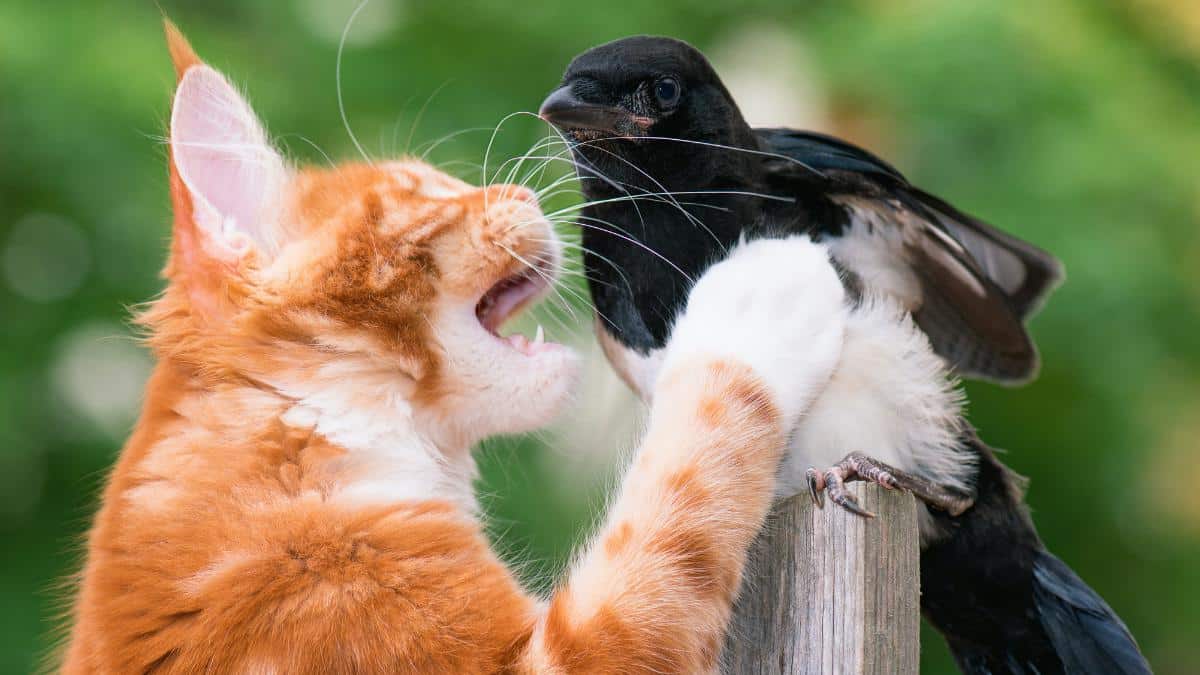
Invasive Species Cost Billions of Dollars in Damages Annually, Researchers Find

A recent study found that cats kill more than one billion birds every year in the United States alone. fotostok_pdv / iStock / Getty Images Plus
Invasive species are causing increasingly costly damage, new research finds.
Exotic, invasive species, introduced by humans, wreak ecological and economic havoc in new habitats. In a study published in Nature, researchers found the costliest among these species are Aedes mosquitoes, rats, cats, termites and fire ants, Science News reported.
“For decades, researchers have been evaluating the significant impacts of invasive species, but the problem isn’t well known by the public and policy makers,” Boris Leroy, a biogeographer at the French National Museum of Natural History in Paris, told Science News. “By estimating the global cost, we hoped to raise awareness of the issue and identify the most costly species.”
Researchers found that over the past four decades (1970 to 2017), invasive species have cost nearly .3 trillion in damages, the French National Centre for Scientific Research wrote in a statement.
The research analyzed over 1,300 estimates of damages by invasive plants and animals, The Guardian reported. And while these damages yielded an annual average of .8 billion, the annual bill actually tripled every decade. “In 2017 alone, it hit 2.7 billion, or 20 times the combined budgets of the WHO and the UN Secretariat that year,” the French National Centre for Scientific Research wrote.
The study, which was the most comprehensive of its kind, was intentionally conservative, relying on only observed data, The Guardian reported. “But there are so many unquantifiables from a monetary perspective, like ecosystem damage and lost productivity, so it’s still the tip of the iceberg,” profesor Corey Bradshaw, of Flinders University in Australia, who was part of the study, told The Guardian, adding that the real costs could be 10 times higher.
The international research team said growth in global trade is to blame for the uptick in economic cost. Deforestation and agricultural expansion have also helped species move easily from habitat to habitat, Science News reported.
Coming with a heavy annual cost of about 9 billion, Aedes mosquitoes, including the Asian tiger mosquito and the yellow fever mosquito, rank as the costliest invasive species. First arriving in the U.S. around the 1980s, in used tires shipped from Asia, the Asian tiger mosquito quickly spread across 40 states and has invaded parts of Europe, South America, Africa and Australia. The yellow fever mosquito, originally from sub-Saharan Africa, has spread around the world in similar ways. Together they transmit diseases like Zika, chikungunya, yellow fever and dengue, Science News reported.
Cats also come with a costly toll, causing about billion annually in damages. Originally from Europe and the Middle East, they now live on all nonfrozen continents where the majority of their cost comes from their impact on native biodiversity. A recent study found that cats kill more than one billion birds every year in the United States alone, Science News reported.
The researchers emphasize that these costs of biological invasions “remain vastly underestimated and under-reported,” but “no reversal of the trend is visible on the horizon since the continued expansion of international commerce and transport generally brings with it more invasive species,” according to a statement by the CNRS.
While these projections may seem dire, professor Helen Roy from the UK Centre for Ecology & Haydrology, who was not involved in the study, said there’s still “some cause for optimism,” The Guardian reported. Opportunities to invest in cargo inspections and other biosecurity measures to stop the spread of invasive species could help reduce costs. “It’s much cheaper than waiting for the species to establish and spread widely before responding,” Roy told Science News.

 233k
233k  41k
41k  Subscribe
Subscribe 